Furniture in Public Collections in Canada / La Collection Nationale de Mobilier
Royal Ontario Museum:
Canadiana Department
1 The collecting of fine, cabinetmaker's furniture made in Canada began long before a separate Canadiana Department was ever envisaged within the Royal Ontario Museum and before Canadian decorative arts were conceived as a special field of study. By the end of the 1940s the nucleus of a good collection, consisting of some thirty-five pieces, approximately two-thirds from Quebec and one-third from Ontario, had been formed by F. St. George Spendlove, then curator of the modern European collections. Its formation was a natural extension of the European Department's collection of fine French and English furniture of the eighteenth and early nineteenth centuries. It was chosen with the same criteria of excellence of design and workmanship that applied to the collecting of English and European decorative arts. Almost half of the pieces acquired in the 1940s came into the collection with the support of the Laidlaw Foundation and reflected a continuing interest of the Laidlaw family in examples of fine Canadian craftsmanship in wood.
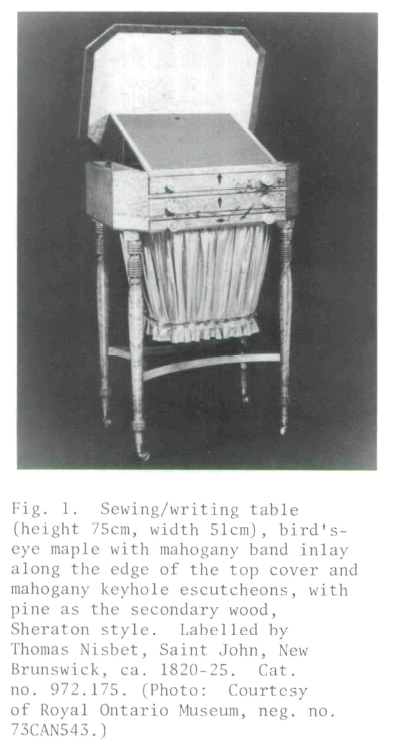 Display large image of Figure 1
Display large image of Figure 1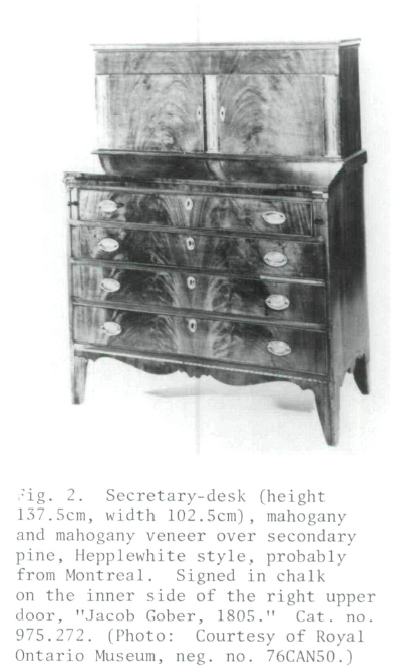 Display large image of Figure 2
Display large image of Figure 22 The decade of the 1950s saw the start of a separate Canadiana Department with Spendlove as its first curator (1952-62). During this period some twenty-six pieces of furniture were acquired, fifteen from Quebec and eleven from Ontario. About one-third were bought through Laidlaw Foundation gifts and the geographical focus remained on examples from Ontario and Quebec.
3 In the 1960s and 1970s collecting took on an accelerated pace, initially under the guidance of Scott Symons and during the last fifteen years under Donald B. Webster, present curator of the Canadiana Department. Some 285 pieces were added during this period, most notably the addition of a considerable body of Maritimes furniture and the strengthening of Ontario and Quebec representation. This major expansion of the furniture collection was made possible through the continuing support of the Laidlaw Foundation, through individual gifts from the McLean Foundation, the Bickell Foundation, and private donors, and to the greatest extent through the generous endowment of an acquisition trust fund by Sigmund Samuel.
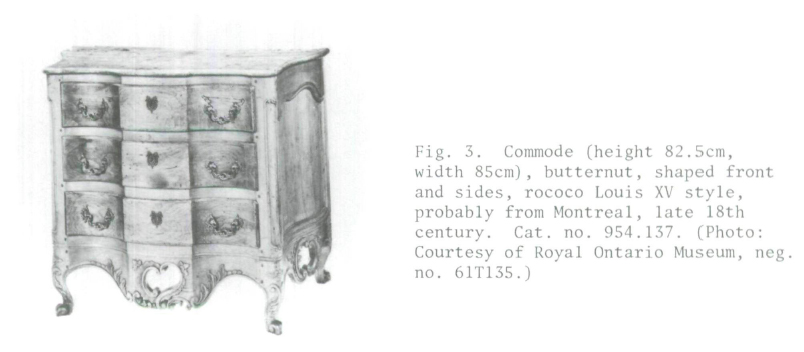 Display large image of Figure 3
Display large image of Figure 34 The collection now numbers approximately 350 pieces, of which 5 are from Newfoundland, 44 from Nova Scotia, 10 from New Brunswick, 162 from Quebec (87 in French styles, 75 in English styles), and 122 from Ontario.
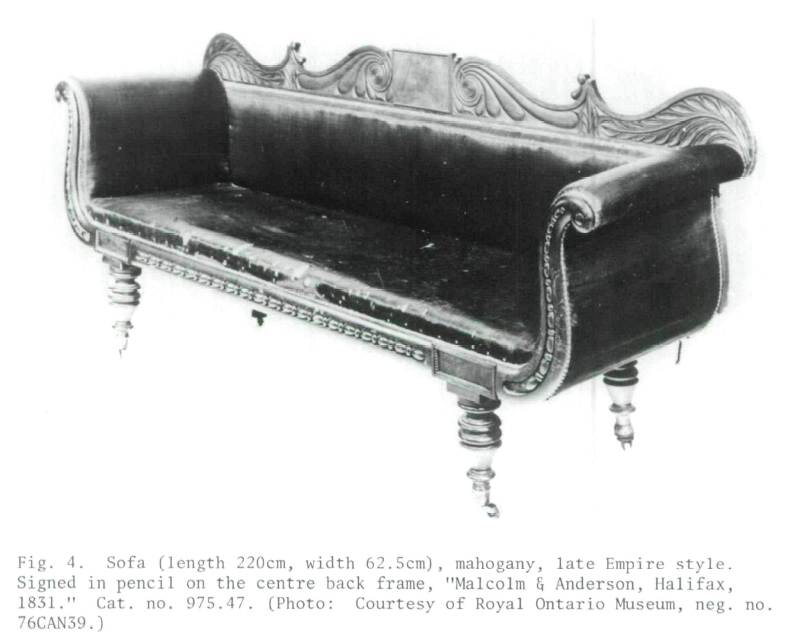 Display large image of Figure 4
Display large image of Figure 45 While a statistical summary will most easily convey the development of the collection and broadly define its scope and regional strengths, the quality can best be shown in the accompanying illustrations of some of the best pieces, chosen to show a variety of furniture forms and styles from New Brunswick, Nova Scotia, Quebec, and Ontario represented in the collection. Within these areas the emphasis on collecting the finest crafted examples has meant a concentration on the furniture produced in the urban centres of Halifax, Saint John, Quebec, Montreal and area, Kingston, and Toronto, and in the Niagara Peninsula. It was in these centres, as George MacLaren points out in Antique Furniture by Nova Scotia Craftsmen (Toronto: Ryerson Press, 1961), that there grew up a class of officers, officials and wealthy merchants who had sufficient money, leisure, and an interest to afford the amenities of social life and the advantages of culture, and who were able to import expensive furnishings from abroad and to patronize local cabinetmakers.(p.4)
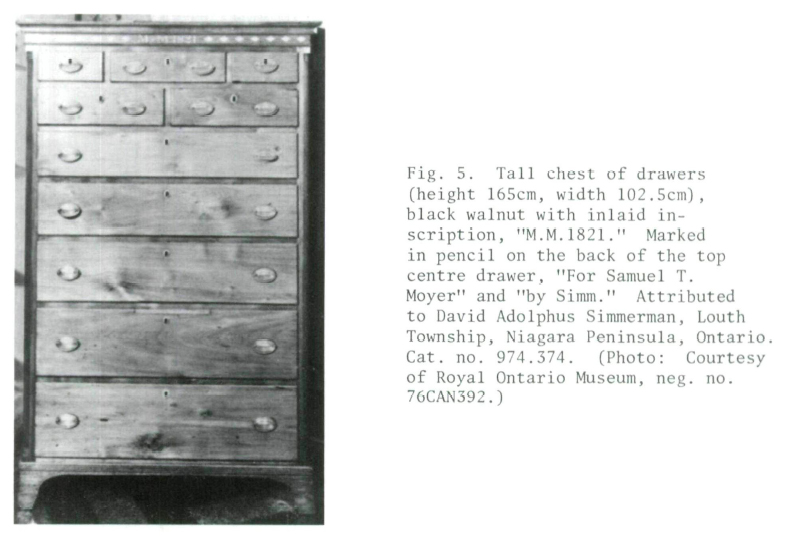 Display large image of Figure 5
Display large image of Figure 5